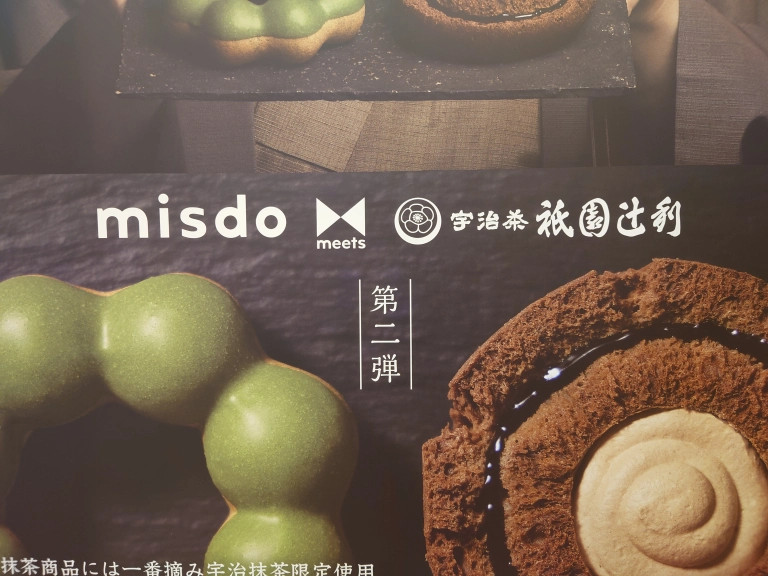
Five new types of donuts with matcha and hojicha flavors? Count us in!
Mister Donut, or “Misdo” as it’s colloquially known in Japan, is currently doing great things with Kyoto-based Japanese confectionary maker Gion Tsujiri. They had only just released the first round of Misdo meets Gion Tsujiri donuts last month, and now are already moving on to a whole new set of matcha and hojicha-flavored donuts.
Like the first round, the second round, which just came out on April 27, features the flavours of Uji Matcha, or green tea, and Uji Hojicha, or roasted green tea, this time in different donut forms. There are altogether five donuts in Round 2 of the Misdo meets Gion Tsujiri collaboration. Three of them are matcha-flavored Pon de Ring donuts, which is Mister Donut’s original recipe of chewy donut holes attached together in a ring. The other two are “old-fashioned” donuts flavored with hojicha. You can buy each one individually or together in the “Gion Tsujiri Eat and Compare Set” (1,003 yen [US$7.65]), which comes with an original paper shopping bag (while supplies last).
The marketing of this second round asks its customers, “Matcha Pon de Ring or Hojicha Old Fashioned: which one’s for you?” There’s no way we could give an honest answer without tasting them all, so our taste-tester, Japanese-language reporter Tasuku Egawa, went to Mister Donut on the release day to try them out. Though it had only been the first day of the donuts’ release, the paper shopping bags were already sold out. Nevertheless, all five donuts were still available, so he snatched one of each and brought them home for a diligent taste test.
First up was the Pon de Ring Double Uji Matcha donut (170 yen).
This one had one side coated in matcha chocolate.
Breaking the donut apart revealed an interior of vibrant green, so the dough was clearly infused with matcha before baking. True to its name, it had a double punch of matcha.
The donut as a whole was sweet, but the dough had the bitterness of true matcha infused into it. It was strong enough to surprise Tasuku and was a pleasant contrast from the usual matcha-flavored sweets, which are generally more sugar than matcha. It’s precisely because it’s a very simple recipe that you can really get a feel for the quality of the ingredients. This was a good start to Tasuku’s taste test.
Next, Tasuku tried the Pon de Ring Uji Matcha Azuki donut (190 yen). This donut, dusted with brown sugar, looked really good, and Tasuku’s first impression of it was that it was heavy.
Not heavy in flavor, but heavy in weight. It had a significant heft to it that surprised him. He might even say it was the heaviest Pon de Ring donut he’d ever held.
That’s because it was a sandwich-style Pon de Ring with a filling of red beans and matcha whipped cream. Combined with the Japanese brown sugar and the matcha-infused dough, this donut was a smorgasbord of Japanese flavors. What’s more, the dough was beautifully moist, possibly owing to the water content of the red beans and the whipped cream. This one was really good!
The last of the matcha Pon de Ring donuts was the Pon de Ring Uji Matcha Warabimochi donut (190 yen). In this one, Tasuku experienced a novel deliciousness.
This one was just as heavy as the Azuki donut. This is likely also due to the fact that it was a sandwich-type, and Tasuku was excited to see what was inside.
It might be hard to tell from the picture because it’s translucent, but underneath the matcha whipped cream was a filling of warabimochi, a jelly-type dessert. It looked mouthwateringly good.
Combined with the doughy texture of the donut, the warabimochi and its slipperiness lent the whole donut a very jiggly texture, and all the toppings combined added a nice moisture to the donut. It was the first time Tasuku had ever tried a Pon de Ring like that. The donut was also light on sugar, which was supplied by the simple sweetness of the warabimochi. The combination of matcha-flavored dough and warabimochi was extremely flavorful. For Tasuku, out of not only the three matcha donuts, but all five of the donuts, this was his favorite.
That’s not to say that the hojicha-flavor old-fashioned donuts were not good, however. Tasuku also liked the Old-Fashioned Uji Hojicha donut (180 yen).
It may be hard to tell from the photo, but this donut had a different color from a regular Old-Fashioned donut. Perhaps because of the hojicha mixed into the dough, it was a nice ochre brown color instead of the usual light brown.
One side was soaked with a hojicha glaze, giving it a nice moistness. Even without eating it, Tasuku could smell the hojicha in it.
As such, he expected it to just about taste like a cup of hojicha tea, but in actual fact, it had a strong sweetness to it. Tasuku didn’t object to that; that sweetness combined with the fragrant taste of hojicha made for a surprisingly good pair.
Lastly, Tasuku tried the Old-Fashioned Uji Hojicha Whip donut (200 yen). This one looked like it was going to be the most luxurious of all the donuts. It even came in its own special box!
The donut inside was topped with some kind of syrup, and had some kind of creamy substance in the middle. This turned out to be a hojicha-flavored whipped cream.
I bet you’re wondering how you’re supposed to eat a donut whose hole has been stuffed with whipped cream without making a huge mess. Worry not: the bottom of the donut was lined with hardened chocolate, providing a barrier for keeping the whipped cream in place.
A quick taste test determined the syrup drizzled in the center of the donut’s dough was hojicha syrup.
And that’s not even all. Hiding underneath the hojicha whipped cream was a filling of warabimochi!
Tasuku took it all apart for the purposes of this article, but he doesn’t recommend doing that if you try this donut. The warabimochi is slippery, which makes it easy for it to fall off the chocolate slab. Tasuku accidentally dropped it when trying to reassemble the donut, which resulted in a bit of a catastrophe.
In any case, the intricacy of this donut and the lengths to which its inventors went to put it together were really interesting. Upon tasting it, Tasuku was just about punched in the face with its sweetness. It was much sweeter than he’d anticipated, but he supposed that was just the way of the Old-Fashioned donut. That sweetness was augmented by the chocolate and the whipped cream, making it a sugar overload. Out of the five, Tasuku would say that this one was by far the sweetest.
Sadly, Tasuku would have to say that the mild flavor of the warabimochi and the taste of the hojicha syrup were quite overwhelmed by the other elements of this donut. However, the warabimochi did retain its unique, jelly-like texture, which came through nicely in each bite. It was still an undeniably delicious donut, and the many elements in it made it exciting, but Tasuku would have to say that the balance of flavors was just not quite there for this one.
So, in answer to Mister Donut’s question, “Which donut is for you?” Tasuku would have to say he’s throwing his hat in the matcha Pon de Ring camp, especially since that warabimochi one was just so good. However, it was a close margin. If you’re aiming for sweetness, the hojicha Old-Fashioned donuts have the edge. Which one is for you? You’ll just have to try them to find out. They’re expected to be around until the end of May, so hurry over to your neighborhood Mister Donut and give them a try before it’s too late!
And if you’re looking for more Japanese sweets-inspired collabs with Gion Tsujiri, be sure to check out McDonald’s Japan’s latest selection of desserts, too!
Images © SoraNews24
● Want to hear about SoraNews24’s latest articles as soon as they’re published? Follow us on Facebook and Twitter!
[ Read in Japanese ]


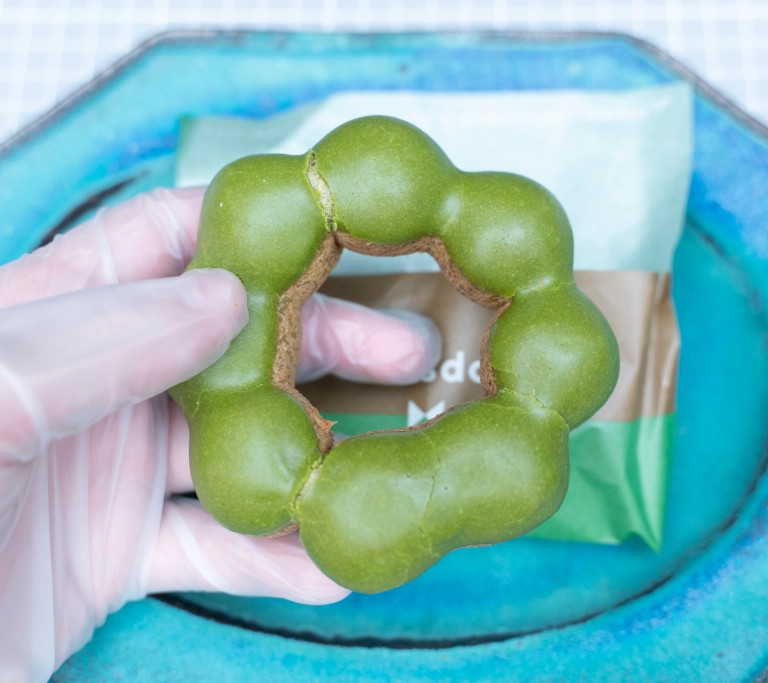
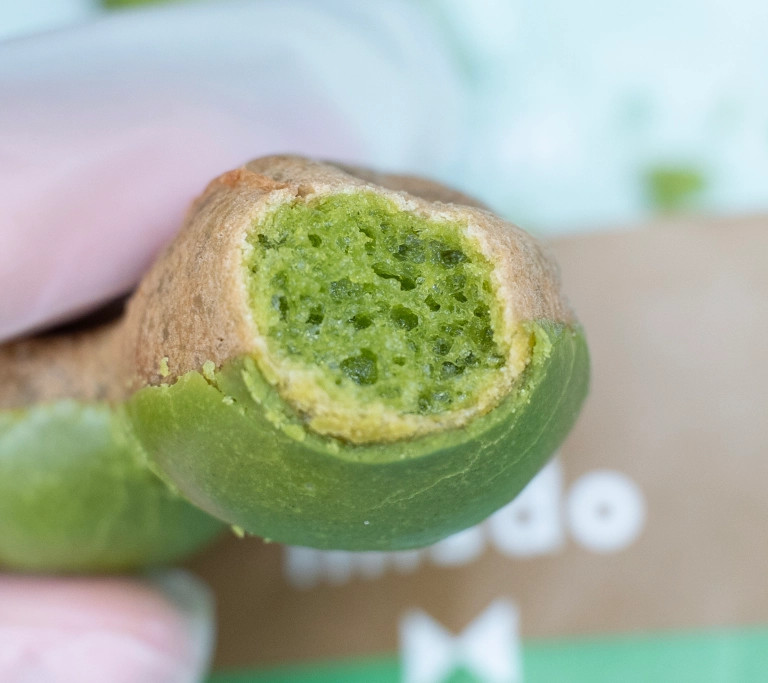
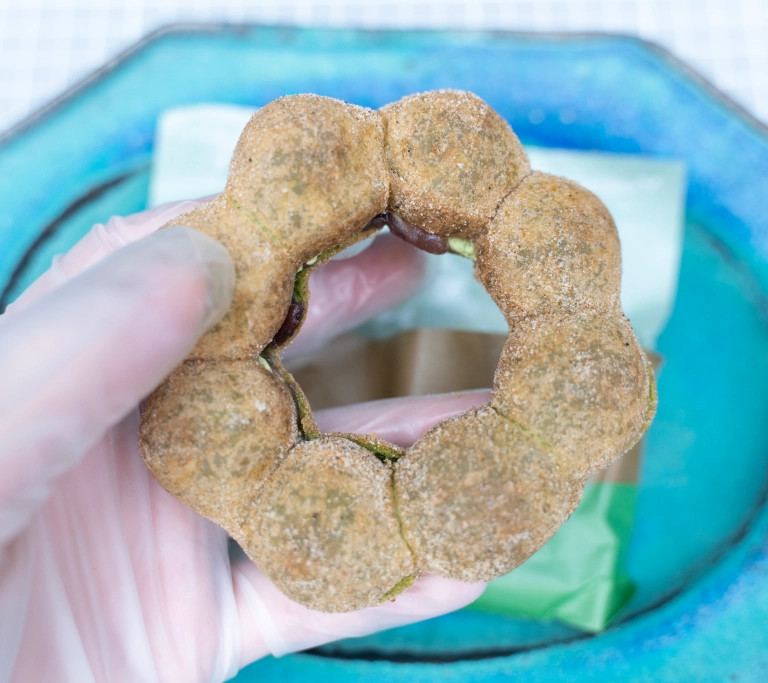
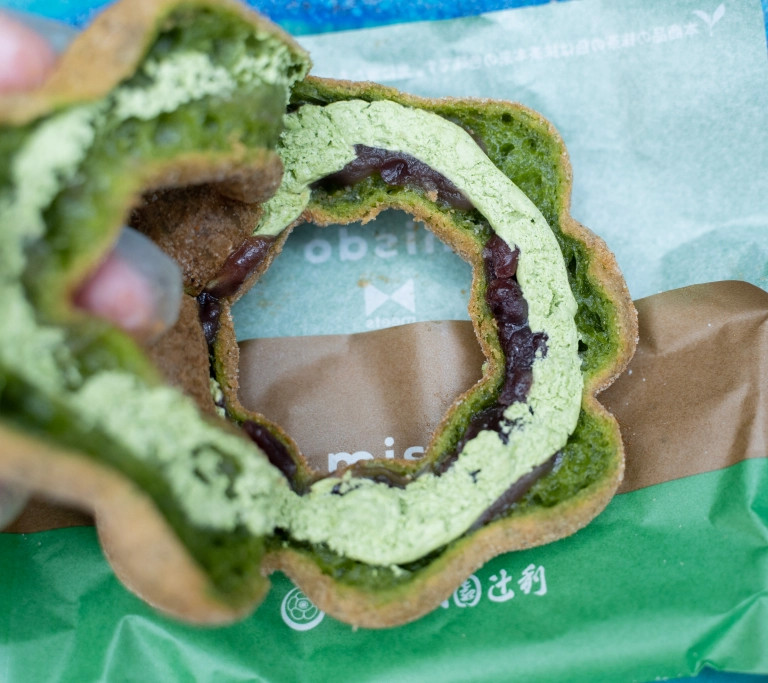
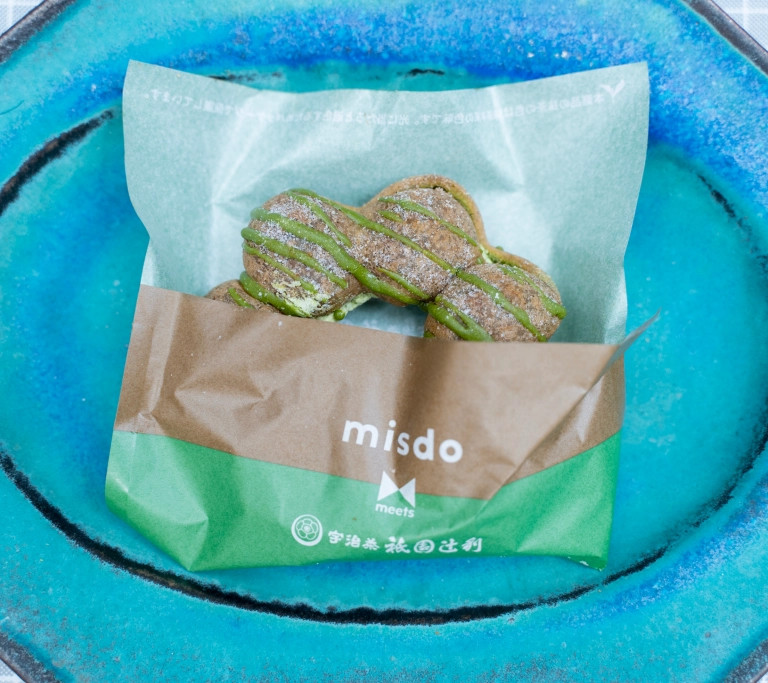
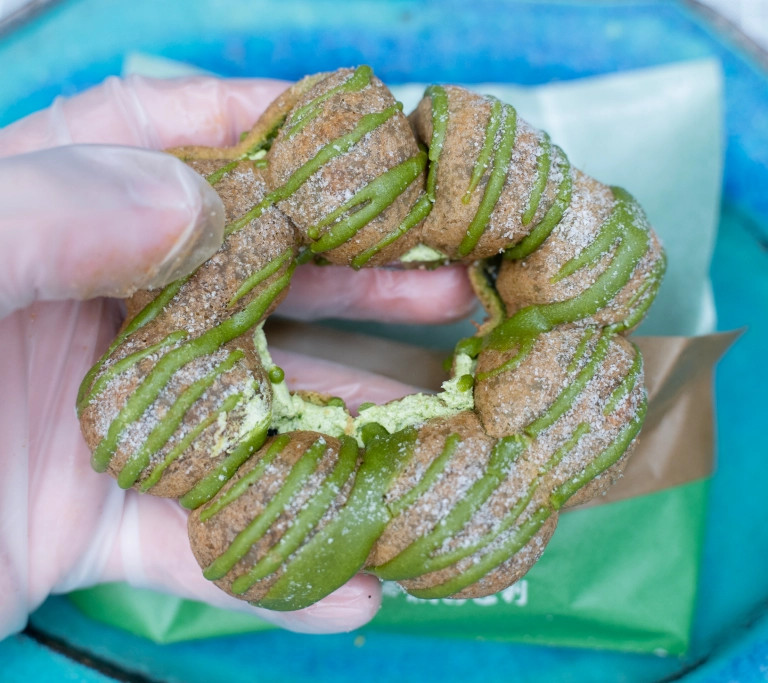

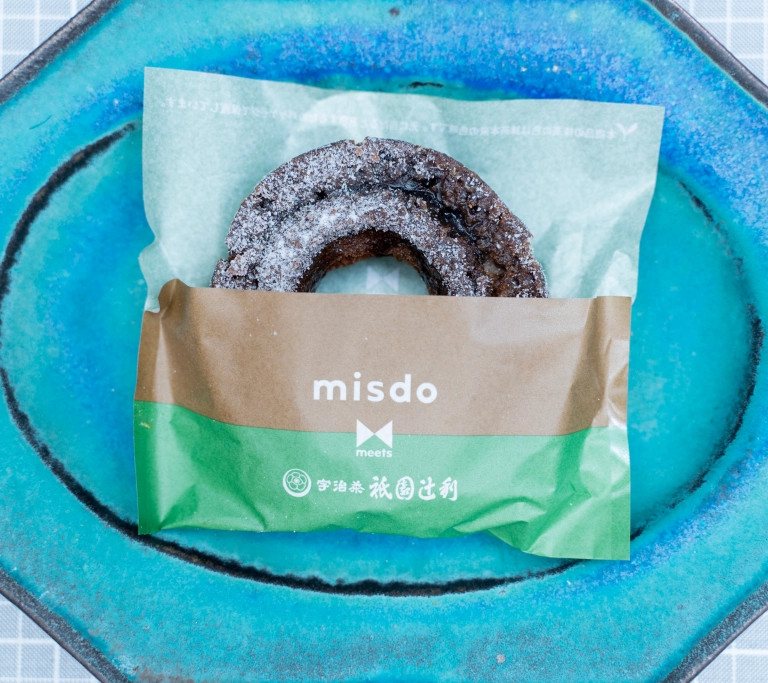
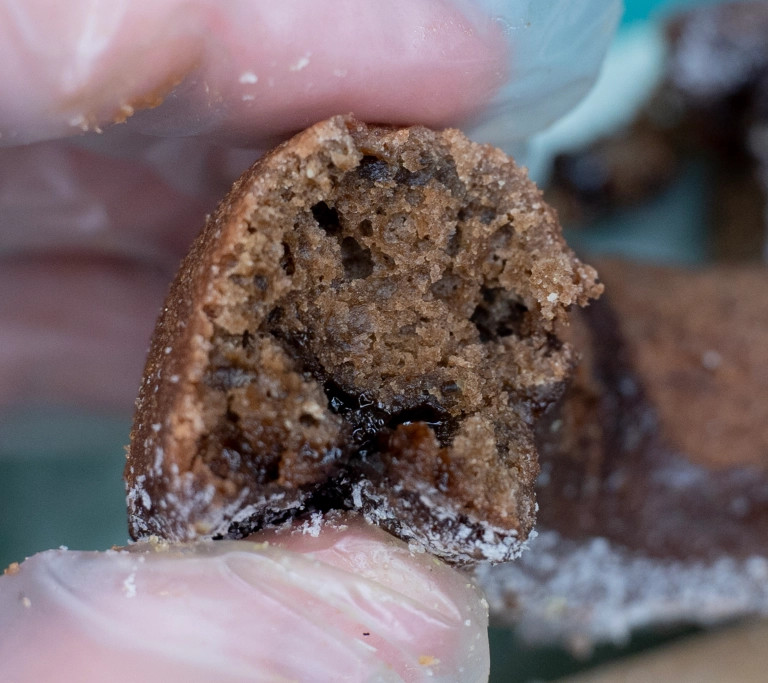
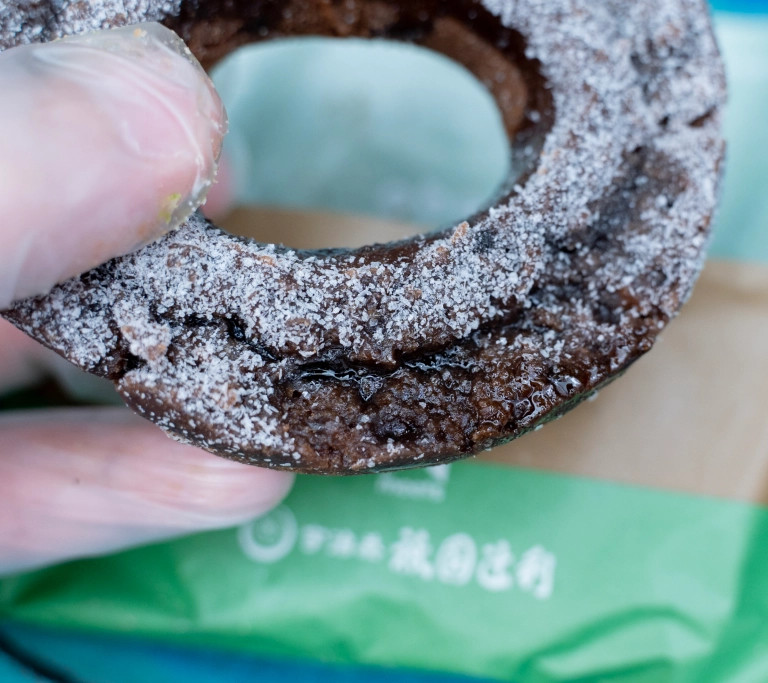


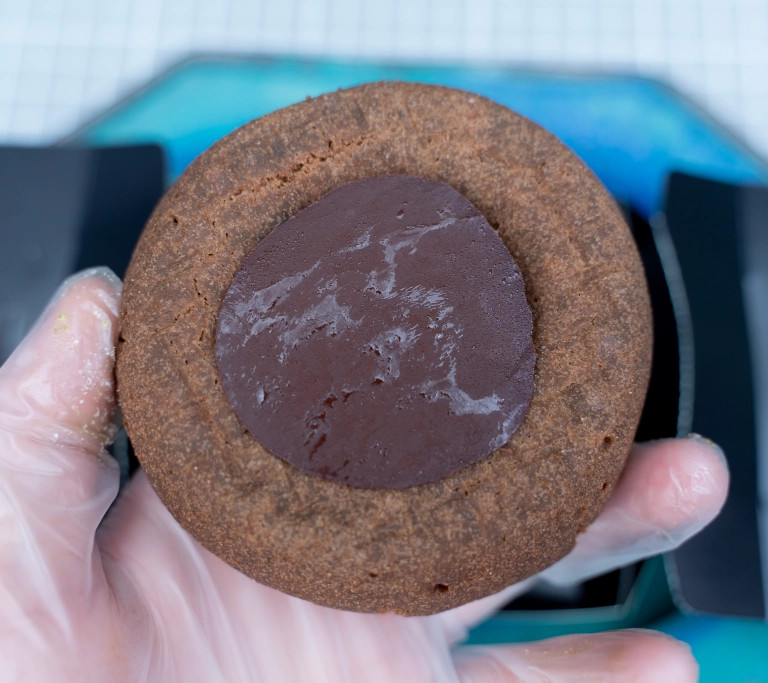
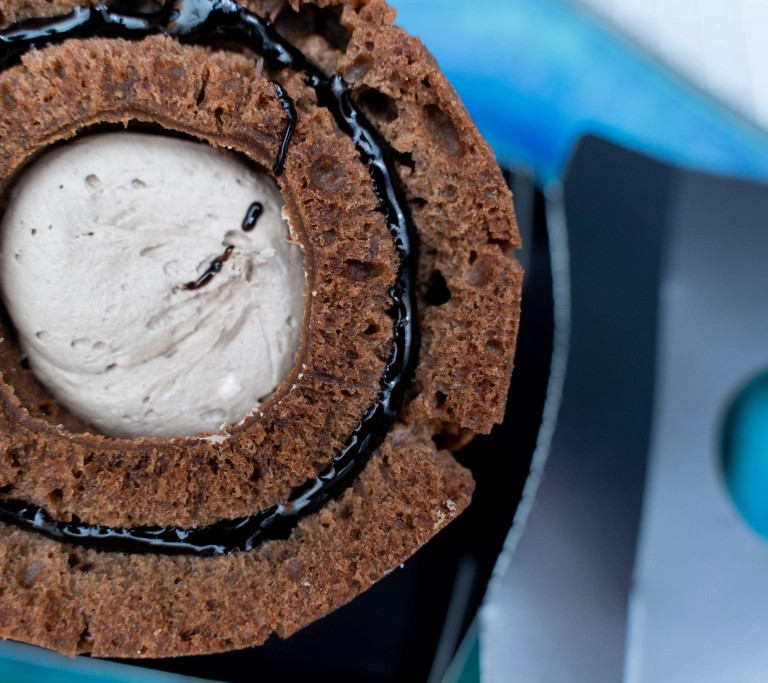
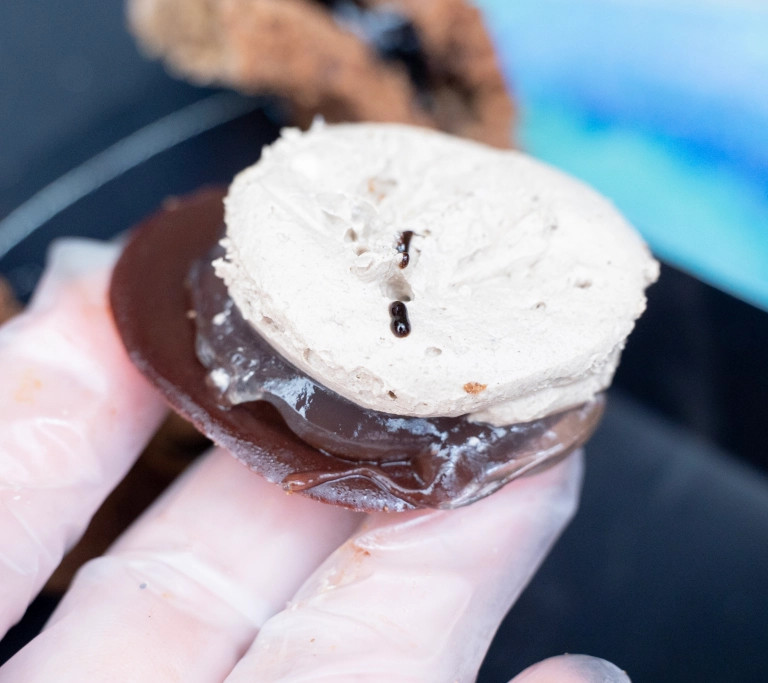
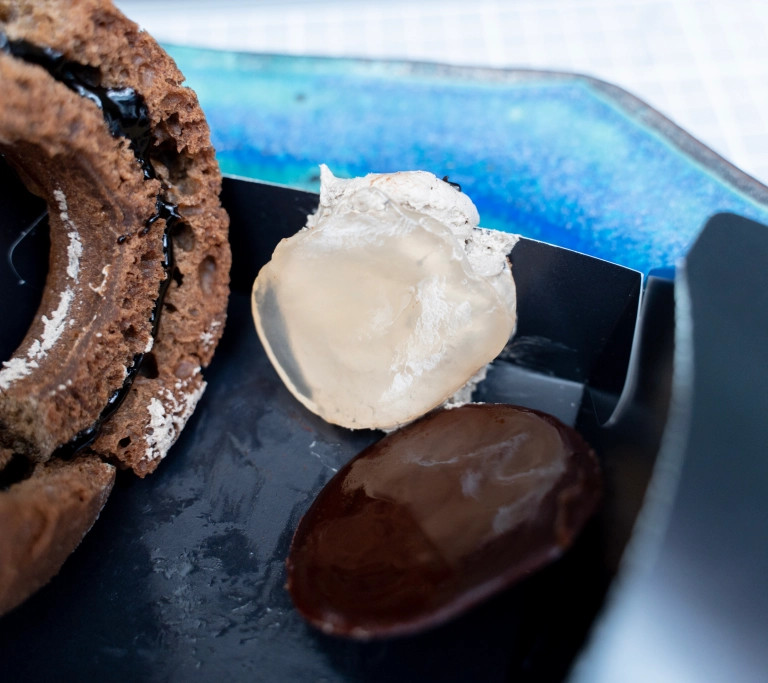
 We try Mister Donut’s new collab with Kyoto matcha sweets specialist Gion Tsujiri 【Taste Test】
We try Mister Donut’s new collab with Kyoto matcha sweets specialist Gion Tsujiri 【Taste Test】 Mister Donut teams up with Gion Tsujiri again, this time with Uji Matcha and Uji Hojicha flavors
Mister Donut teams up with Gion Tsujiri again, this time with Uji Matcha and Uji Hojicha flavors We try the four new offerings in the Mister Donut x Gion Tsujiri collaboration series【Taste test】
We try the four new offerings in the Mister Donut x Gion Tsujiri collaboration series【Taste test】 Mister Donut releases new Uji Matcha doughnut with Gion Tsujiri
Mister Donut releases new Uji Matcha doughnut with Gion Tsujiri Mister Donut ready to make hojicha dreams come true in latest collab with Kyoto tea merchant
Mister Donut ready to make hojicha dreams come true in latest collab with Kyoto tea merchant Japanese beef bowl chain Sukiya’s 2026 Smile Box lucky bag basically pays for itself
Japanese beef bowl chain Sukiya’s 2026 Smile Box lucky bag basically pays for itself Rakuten randomly offers 58 New Year’s osechi feasts in Japan, but did we get a star or a dud?
Rakuten randomly offers 58 New Year’s osechi feasts in Japan, but did we get a star or a dud? Majority of Japanese mayors say foreign residents are essential but most see good and bad effects
Majority of Japanese mayors say foreign residents are essential but most see good and bad effects Japan’s new difficult-to-drink-from beer glass protects your liver, but it’s a brutal experience
Japan’s new difficult-to-drink-from beer glass protects your liver, but it’s a brutal experience New train recreates hotel atmosphere with wood interiors and views from the foot of Mount Fuji
New train recreates hotel atmosphere with wood interiors and views from the foot of Mount Fuji 100 years of Japanese women’s hair and makeup trends in less than a minute and a half【Video】
100 years of Japanese women’s hair and makeup trends in less than a minute and a half【Video】 Original Totoro plush toys from 80s and 90s re-issued for Studio Ghibli exhibition
Original Totoro plush toys from 80s and 90s re-issued for Studio Ghibli exhibition The dark kawaii fashions of the Ank Rouge lucky bag are here!【Photos】
The dark kawaii fashions of the Ank Rouge lucky bag are here!【Photos】 4chan creator hands reins over to 2channel’s Hiroyuki Nishimura
4chan creator hands reins over to 2channel’s Hiroyuki Nishimura Disney villain-themed eyeglasses in four styles up for presale in Japan
Disney villain-themed eyeglasses in four styles up for presale in Japan Starbucks Japan ready to get Year of the Horse started with adorable drinkware and plushies【Pics】
Starbucks Japan ready to get Year of the Horse started with adorable drinkware and plushies【Pics】 Hayao Miyazaki says Happy New Year to Studio Ghibli fans with new art for Year of the Horse
Hayao Miyazaki says Happy New Year to Studio Ghibli fans with new art for Year of the Horse We found possibly the quietest Japanese-style hotel in Tokyo’s bustling Shinjuku district
We found possibly the quietest Japanese-style hotel in Tokyo’s bustling Shinjuku district Cup Noodle tries an authentic Jiro-style ramen, but something’s not quite right
Cup Noodle tries an authentic Jiro-style ramen, but something’s not quite right The best Starbucks Japan Frappuccinos we want to drink again in 2026
The best Starbucks Japan Frappuccinos we want to drink again in 2026 We revisited Sweets Paradise after a decade to see if Japan’s dessert buffet still delivers
We revisited Sweets Paradise after a decade to see if Japan’s dessert buffet still delivers That time Seiji called JASRAC to ask why he didn’t get paid royalties for his song being on TV
That time Seiji called JASRAC to ask why he didn’t get paid royalties for his song being on TV Japan’s oldest largetooth sawfish in captivity back on display in Mie Prefecture
Japan’s oldest largetooth sawfish in captivity back on display in Mie Prefecture Pizza Hut Japan’s hot lucky bags are perfect for a New Year’s pizza party
Pizza Hut Japan’s hot lucky bags are perfect for a New Year’s pizza party 7-Eleven Japan starts new temporary luggage storage service in over 300 branches
7-Eleven Japan starts new temporary luggage storage service in over 300 branches Disillusionment at Tsukiji’s tourist-target prices led us to a great ramen restaurant in Tokyo
Disillusionment at Tsukiji’s tourist-target prices led us to a great ramen restaurant in Tokyo Starbucks teams up with 166-year-old Kyoto doll maker for Year of the Horse decorations【Photos】
Starbucks teams up with 166-year-old Kyoto doll maker for Year of the Horse decorations【Photos】 Tokyo considering law requiring more trash cans following litter increase in heavily touristed area
Tokyo considering law requiring more trash cans following litter increase in heavily touristed area Tokyo’s Tsukiji sushi neighborhood asks tour groups to stay away for the rest of the month
Tokyo’s Tsukiji sushi neighborhood asks tour groups to stay away for the rest of the month Tokyo event lets you travel back in time, for free, to celebrate 100 years since Showa era start
Tokyo event lets you travel back in time, for free, to celebrate 100 years since Showa era start Japan may add Japanese language proficiency, lifestyle classes to permanent foreign resident requirements
Japan may add Japanese language proficiency, lifestyle classes to permanent foreign resident requirements Sanrio theme park in Japan announces plans to expand into a Sanrio resort
Sanrio theme park in Japan announces plans to expand into a Sanrio resort Stamina-destroying “Paralysis Noodles” are Tokyo’s newest over-the-top ramen innovation
Stamina-destroying “Paralysis Noodles” are Tokyo’s newest over-the-top ramen innovation Survey asks foreign tourists what bothered them in Japan, more than half gave same answer
Survey asks foreign tourists what bothered them in Japan, more than half gave same answer Japan’s human washing machines will go on sale to general public, demos to be held in Tokyo
Japan’s human washing machines will go on sale to general public, demos to be held in Tokyo Japan’s deadliest food claims more victims, but why do people keep eating it for New Year’s?
Japan’s deadliest food claims more victims, but why do people keep eating it for New Year’s? We deeply regret going into this tunnel on our walk in the mountains of Japan
We deeply regret going into this tunnel on our walk in the mountains of Japan Studio Ghibli releases Kodama forest spirits from Princess Mononoke to light up your home
Studio Ghibli releases Kodama forest spirits from Princess Mononoke to light up your home Major Japanese hotel chain says reservations via overseas booking sites may not be valid
Major Japanese hotel chain says reservations via overseas booking sites may not be valid Put sesame oil in your coffee? Japanese maker says it’s the best way to start your day【Taste test】
Put sesame oil in your coffee? Japanese maker says it’s the best way to start your day【Taste test】 No more using real katana for tourism activities, Japan’s National Police Agency says
No more using real katana for tourism activities, Japan’s National Police Agency says Starbucks Japan reveals new sakura drinkware collection, inspired by evening cherry blossoms
Starbucks Japan reveals new sakura drinkware collection, inspired by evening cherry blossoms Updated cherry blossom forecast shows extra-long sakura season for Japan this year
Updated cherry blossom forecast shows extra-long sakura season for Japan this year Mister Donut makes matcha lovers swoon with new Gion Tsujiri collection
Mister Donut makes matcha lovers swoon with new Gion Tsujiri collection Mister Donut and Gion Tsujiri bring hojicha heaven to Japan with these latest additions
Mister Donut and Gion Tsujiri bring hojicha heaven to Japan with these latest additions Mister Donut, Kyoto tea merchant create new line of treats, with one that’s two desserts in one
Mister Donut, Kyoto tea merchant create new line of treats, with one that’s two desserts in one Mister Donut’s new Kyoto roasted green tea donut is a mess…in the best possible way
Mister Donut’s new Kyoto roasted green tea donut is a mess…in the best possible way How do the new Mister Donut x Kyoto matcha masters Tsujiri donuts taste? We find out【Taste test】
How do the new Mister Donut x Kyoto matcha masters Tsujiri donuts taste? We find out【Taste test】 Japan’s new Mister Donut matcha donuts have so much green tea flavor one has to use the hole
Japan’s new Mister Donut matcha donuts have so much green tea flavor one has to use the hole Mister Donut releases new matcha doughnuts with Kyoto green tea specialists Gion Tsujiri
Mister Donut releases new matcha doughnuts with Kyoto green tea specialists Gion Tsujiri Mister Donut, Kyoto tea maker, and celebrity pastry chef collaboration yields beautiful results
Mister Donut, Kyoto tea maker, and celebrity pastry chef collaboration yields beautiful results Mister Donut’s strongest-ever matcha doughnuts are so intense they’ll bind with your DNA
Mister Donut’s strongest-ever matcha doughnuts are so intense they’ll bind with your DNA Mister Donut Glossy Green Tea shows true beauty is on the inside, even for desserts【Taste test】
Mister Donut Glossy Green Tea shows true beauty is on the inside, even for desserts【Taste test】 Mister Donut releases most intense matcha doughnut ever, in conjunction with Kyoto tea specialist
Mister Donut releases most intense matcha doughnut ever, in conjunction with Kyoto tea specialist Mister Donut’s new green tea doughnuts serve up matcha and hojicha from a Kyoto specialist
Mister Donut’s new green tea doughnuts serve up matcha and hojicha from a Kyoto specialist “Glossy green tea donuts” sound weird, look amazing in Mr. Donut team-up with Kyoto matcha master
“Glossy green tea donuts” sound weird, look amazing in Mr. Donut team-up with Kyoto matcha master Sakura and matcha star in new Mister Donut collection
Sakura and matcha star in new Mister Donut collection Are Mister Donut’s new sakura and matcha doughnuts all they’ve been hyped up to be?
Are Mister Donut’s new sakura and matcha doughnuts all they’ve been hyped up to be?
Leave a Reply